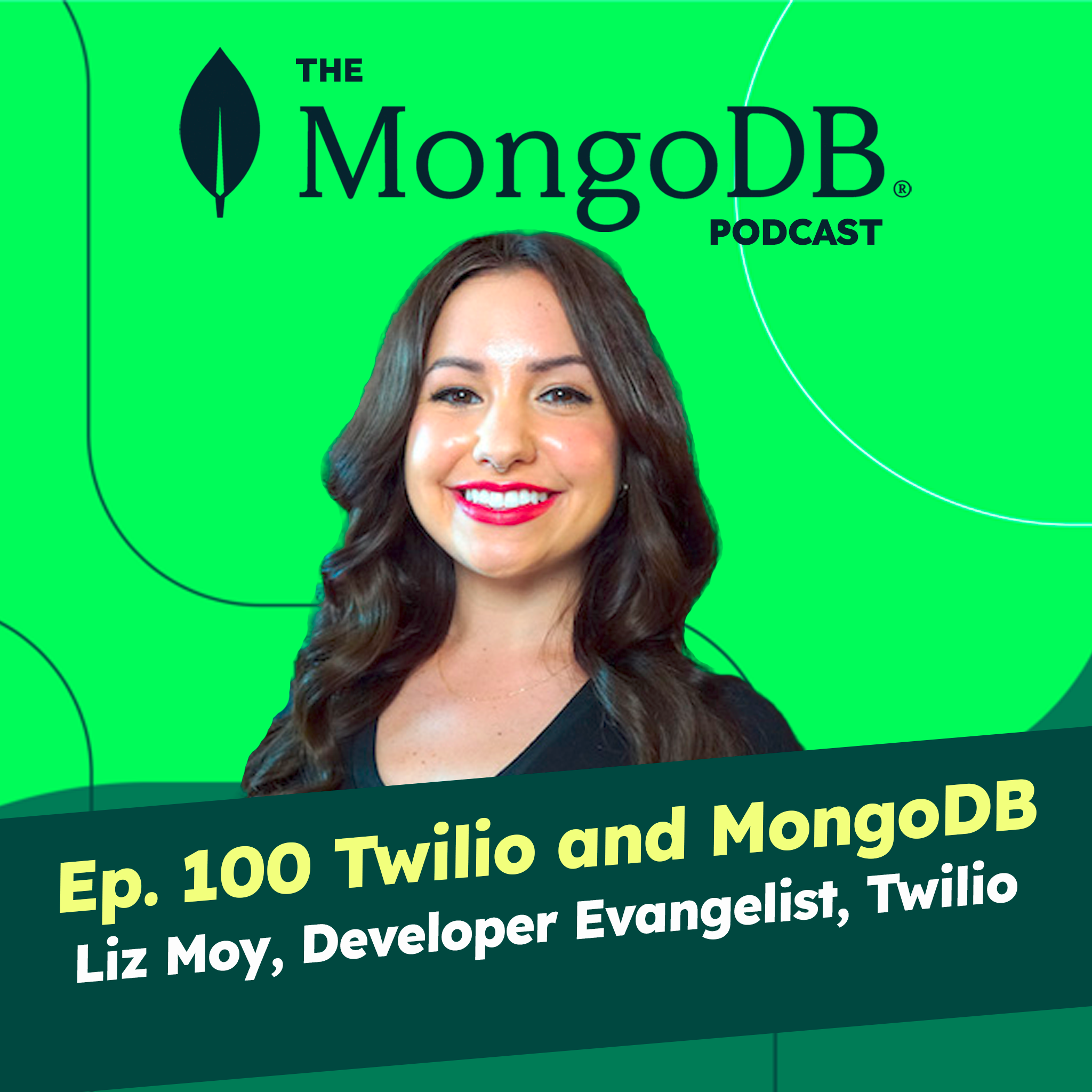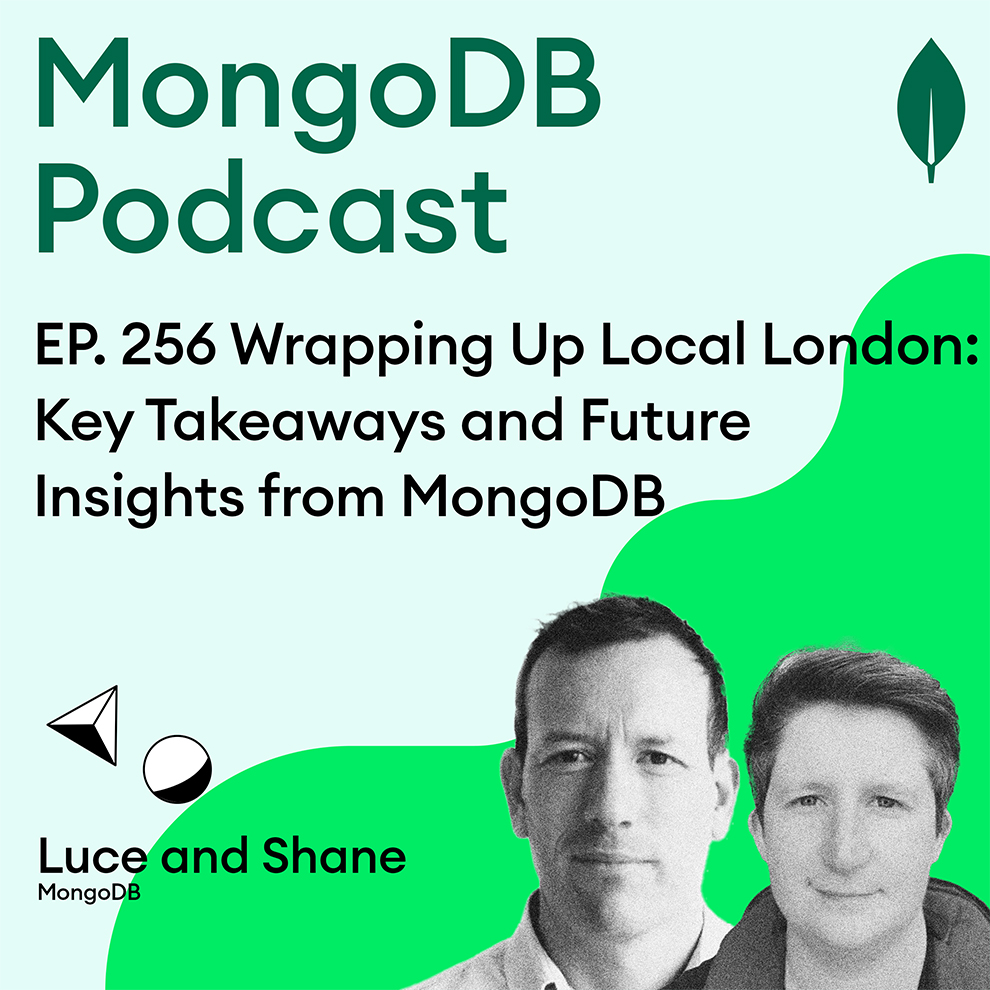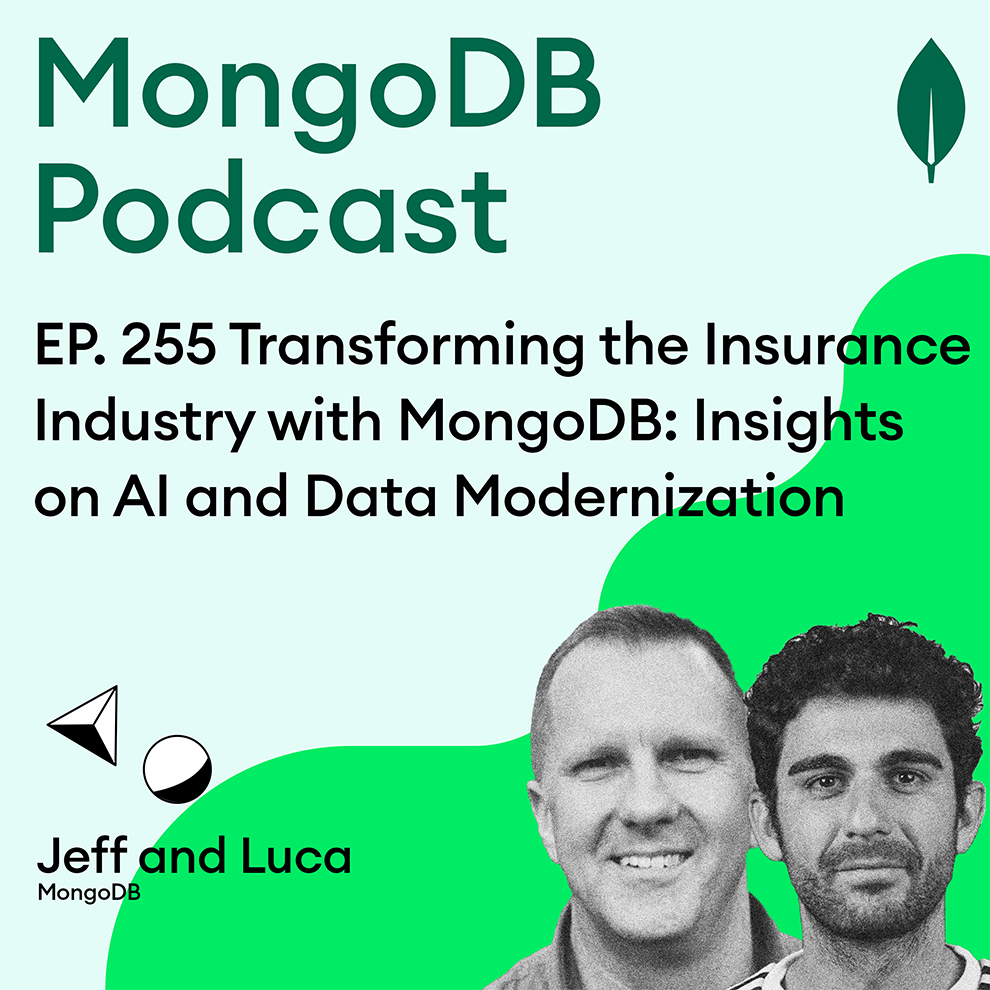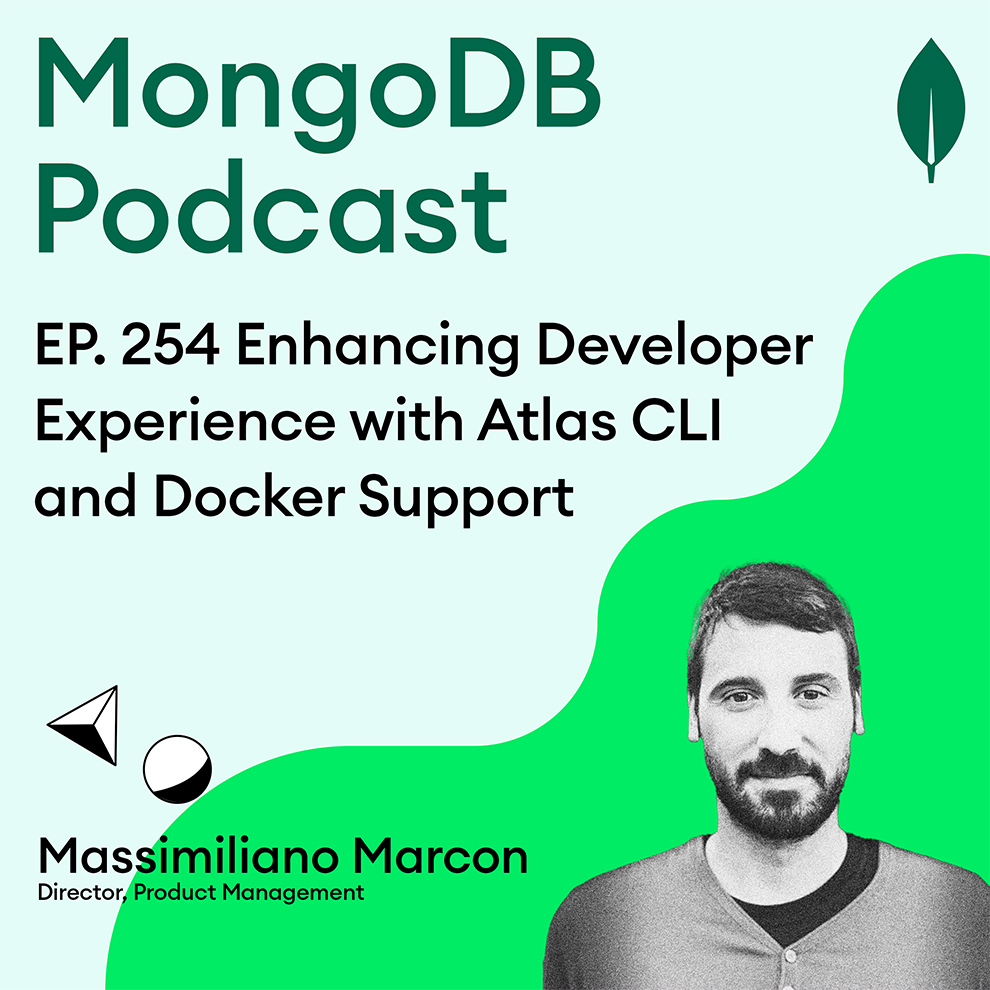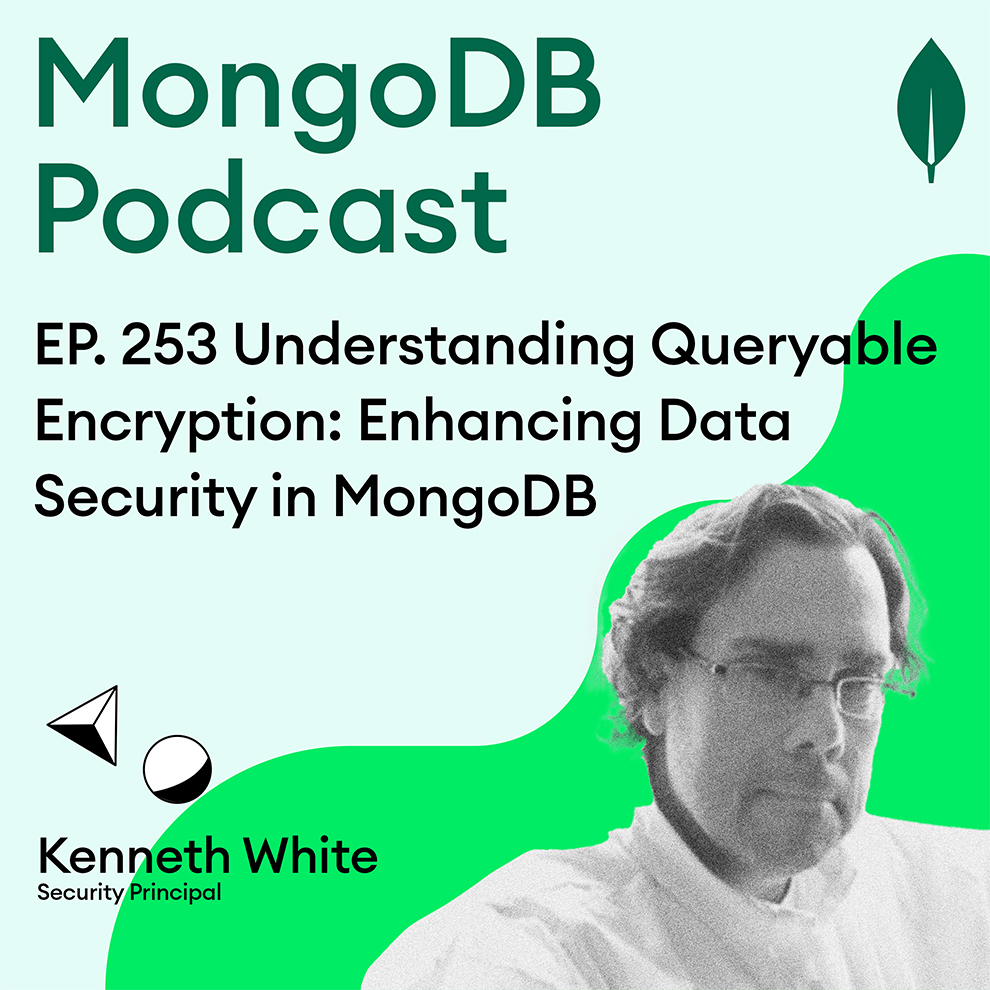Ep. 100 Twilio and MongoDB with Liz Moy
- 0.5
- 1
- 1.25
- 1.5
- 1.75
- 2
Liz Moy: Hey everybody. My name's Liz Moy and I'm a developer evangelist at Twilio. And I'm so excited to talk a little bit more today about MongoDB and Twilio. So stay tuned.
Michael Lynn: Twilio was founded in 2008 by Jeff Lawson, Evan Cooke, and John Wolthuis. Millions of developers around the world have used Twilio and their cloud communications platform to unlock the magic of communications to improve any application experience for their users. From there about page Twilio has democratized communication channels like voice, text, chat, video, and email by virtualizing the world's communication infrastructure through APIs that are simple enough for any developer to use yet robust enough to power the world's most demanding applications. On today's show to Liz Moy, Developer Evangelist at Twilio, joins me for a discussion about Twilio and how MongoDB and Twilio work great together. Stay tuned. This is the MongoDB podcast and my name is Michael Lynn. Well, Liz, welcome to the show. It's great to have you on the podcast. How're you doing today?
Liz Moy: I'm doing really well. How are you, Michael?
Michael Lynn: I'm really excited to talk to you about Twilio. I've had a bunch of experience with Twilio, primarily in the SMS space. I wrote some example code and I actually leveraged something for a voting app that I wrote and the experience was fantastic. So we'll get to that. But before we get to the actual use cases, why don't you tell the folks who you are and what you do at Twilio?
Liz Moy: Yeah. Well, thanks so much for having me on the show. Michael, I've really been looking forward to this. I work at Twilio serving the incredible developer community that we work with and really empowering them to build things with all kinds of different communications APIs. So the way I like to describe it to anybody when I'm trying to talk about what Twilio is basically, if you could control a phone number with code, you can make it with Twilio. So we do all kinds of things from allowing you to write code in your favorite programming language, to send SMS messages or WhatsApp messages, allow you to make and receive phone calls. And now we've kind of delved into creating full on contact centers that utilize sort of a mixture of all of those different APIs, as well as video. Video is one that has seen a lot of usage over the last few years, especially, and is really fun to play around with. So anytime you need to connect with somebody online or over a phone, there's probably a Twilio API that you could use to do that.
Michael Lynn: Fantastic. And I can imagine that over COVID, your company must have experienced explosive growth. I'm sure that there's a lot of developers focusing on creating amazing projects to close the gap during this time.
Liz Moy: Absolutely. Yeah. It's been obviously a very difficult time for lots of people, but it's also been a challenge to connect. And I think one of the really positive things about Twilio is that it offers a lot of different options on, on how you want to connect with other people and it gives you a lot of flexibility. So I think a lot of people probably know Twilio from SMS and for myself, that's honestly one of my favorite things to demo and show off to people as well as voice. There is a demo that, if you've ever seen Twilio at a conference or an event, you may have seen one of our evangelists do it. It's pretty simple, but I would say very powerful because in the demo, what we do is we create an SMS autoresponder and everybody in the room texts into a number that we buy live and put up on screen. And then just a couple of minutes later after we write some more code, we make a call back out to all of the participants and connect them to a conference line where they can all chat with each other. So I wasn't sure how this would translate into virtual events, but I have to say after doing it live and doing it virtually, I would say it may even be more powerful because all of the people aren't next to each other sitting at a conference. Like they're in their own home offices, but they can still hear everybody at the event. So that's been a pretty amazing thing to be a part of.
Michael Lynn: That's a great use case for sure. What are some of the other popular use cases that people are building on today?
Liz Moy: Yeah, absolutely. There is a number of use cases really across every industry, which I think is one of the things that I find really interesting is that it could be a use case in healthcare, or it could be automotive sales. And the developers that work in these industries are kind of utilizing the same sorts of tools. One that I see quite a bit is conversational bots. So this might be a WhatsApp bot, where somebody texts in and gets taken through a conversation. And a lot of times maybe people are hooking into some sort of AI on the back end so that they can make it sound more like a human. There's also been quite a few video use cases that we've seen, especially companies that want to create something that's in an app that they've built themselves. So they already have the app created and they just want to plug in video for that. And developers also, I think, really like to get creative with the way that they set things up. And I'm really fortunate to work on a team that runs hackathons with developers from all different kinds of enterprise companies. So we've seen people create these bots that will allow people to put in what they want to order and have it delivered to their house, something like that, or an insurance company might use video to allow people to create a claim on the spot and actually take a video of an accident that they just got into saving everybody a lot of time and headache in that kind of situation.
Michael Lynn: Now you mentioned video, it's not the first thing I think of when I think of Twilio, but are you doing a lot in this space?
Liz Moy: Yeah. We just made a foray into live streaming as well. So we have this video API that's been just really consistent. It's been a really, really great product that a lot of companies have have leveraged. And then just this past autumn, we launched the live streaming feature. So definitely with all the different live streaming things that exist now, I think it was a good move for us. And I'm curious to see what different companies are able to do. There have been a lot of really interesting retail use cases that have come up for it. So definitely keeping my eye on that.
Michael Lynn: Well, one of the things that I've been consistently impressed with when I would work with Twilio is the documentation. The thing that is really interesting is that it's in context. When I'm working in Twilio and I'm in the documentation most times, it's actually got the context for the service that I'm leveraging. That's pretty amazing. Can you talk a little bit more about the documentation?
Liz Moy: I could go on for days about the documentation and the team that creates those because they are really so incredible. And I think one of the big key sort of values that we have at Twilio and on our team is empathy. We always want to be thinking, what is this experience like for the developer and how can we make it better for them? And I think that the docs team just epitomizes that. I really think they do that so well. So it's nice to hear that other people have had that experience using them. And yeah, our documentation. I think that it provides a lot of real world use cases, right? So we were just chatting a little bit about some of the use cases that come up. And one that I came across, as I was thinking about our conversation is actually a survey that the docs team had put together. It was a how to build a survey using SMS, Node. js and MongoDB. So it's really great because I think it also is very... It details what's going on, right? It's not just, okay, pace this in or run this or install this NPM module. It's this is actually what's happening. This is why we're doing this. So if you're somebody that's really new to development, hopefully you feel supported and like you understand kind of what's going on. And then if you've been in development for a long time, you also are given quite a few options. There are I think, six or seven different programming languages that also utilize our SDKs that you can click through when you're doing something in the docs. And then we also have a CLI as well.
Michael Lynn: Yes, I did notice that not only was their context for my specific utilization of the service, but it's also tabbed. And I can view examples in Node. js, in Python and some of the other languages. So kudos to the docs team. It's really fantastic. So I want to talk a little bit about MongoDB and Twilio because they go great together and we've had a relationship from the very beginning. MongoDB Atlas, the database as a service platform obviously gives you the ability to, from a web interface control, manage, deploy your MongoDB instances. But there's also the realm back end and the backend services associated with the database. These are resident and you can write functions in JavaScript that have really great access to your data. And it also gives you the ability to have third party services. Now we're slightly changing the approach that we've taken in the past. We had a dedicated third party service for Twilio, and that simply allowed you to launch a third party service under the Twilio umbrella and load in your account. I think it's called an SID and the token, right? And then from there you get a service that you name that's intimately connected to the Twilio implementation that you have. And then from there you have the ability to leverage the methods associated with the Twilio service. That's going to change a little bit. So for folks listening, if you want to dive in and start leveraging Twilio, you can still do that using the third party services that are unique to Twilio, but those will be deprecated in December of 2022. And going forward in order to do that, you'll have all of the same capabilities available from the Atlas platform, leveraging HTTPS endpoint. So just a note about how, if you're listening to this and you're inspired to jump in and start building something interesting, you have a couple of ways to do that today. So the integration between MongoDB and Twilio, it's largely accomplished through leveraging the API that Twilio offers. Now, Twilio offers so many different APIs. Do you want to talk a little bit about the maybe SMS and voice- based APIs?
Liz Moy: Yeah, absolutely. I love to talk about programmable messaging and programmable voice. So I like to refer to these as sort of the bread and butter of Twilio, because it's really the two APIs that everything that Twilio is today was founded on. There's this story about how when one of our co- founders and CEO, Jeff Lawson was pitching the idea of Twilio, he would, if you're familiar with the concept of Rick rolling, which is where, you send somebody a link or ask them to call a phone number in this instance. And they think that they're, I don't know, having some type of experience, but really ends up playing Rick Astley's, Never Gonna Give You Up. That's how he pitched the company to people, right? So he built this kind of simple service where you would call into a number and then it would pull up an MP3 audio file of Never Gonna Give You Up. And it would play it on the line. So as a developer evangelist, the demos write themselves, right? Like it's so interactive and it's something that people can grasp quickly experiencing it by calling in or texting in or WhatsApp messaging in. And one thing that I do quite frequently in my role, I partner with a lot of the different marketing managers and marketing teams within Twilio. And we actually use bots like this to collect survey responses. Like when people want to... When we want to ask, like, what was your experience like at the hackathon? Or how was this event for you? Is it okay if we contact you? So we use the technology quite a bit as well, just in the nature of the jobs that we do, but as a developer, oh, there are just like innumerable ways, right? I think one of the huge ones that I see really frequently is people running campaigns, where they have people messaging and then they get some sort of discount for doing that. Another really massive one is IVRs. And I have to admit that I was probably working at Twilio for maybe like four or five months. And I had no idea what an IVR was. People would always say, oh, for the IVR. And I was like, yeah, yeah. And I don't even know why I never looked it up, but, if you're listening to this podcast and you have experienced an IVR, an IVR is just one of those sort of phone trees where maybe you're calling into like the pharmacy and it will ask you to press one to talk to the pharmacist or two to speak to the front desk. So that is what an IVR is. And it also is leveraged really frequently in contact centers. And I mean, we could probably do a whole episode just on contact centers. There's such massive builds, but definitely contact centers and anything related to support, customer support, there is going to be programmable messaging and programmable voice used in some way for that type of case.
Michael Lynn: Yeah. And another one that I've actually started writing an article about it's verifying or validating someone's identity via SMS, right? That's another big one.
Liz Moy: Yes.
Michael Lynn: So imagine you want to be able to have multiple factor authentication, what better way than to get somebody's telephone number and send them a text to have them validate, right?
Liz Moy: Yes. And there is, we had a product called Authy. Authy is not as widely used anymore. We've moved over to Twilio Verify now, but Twilio Verify is really great for authentication. And there are definitely use cases where it would make a ton of sense to utilize MongoDB as part of that authentication process.
Michael Lynn: Great. Okay. So, great information. What about folks that are just getting started? Maybe they haven't worked with communication, but they see it as an interesting addition to code that exists or something, a new project, perhaps, what would you tell those folks? What advice would you have for folks that just want to get started?
Liz Moy: Yeah, so that's a great point. I came to development later in life myself. I didn't learn how to code until I was in my twenties. And so I definitely can relate to people who are maybe just starting out and potentially not knowing where to begin, or maybe you're just somebody who would like to build something, but you don't necessarily want to go through the whole process of figuring out what language you want to write it in or how to get started that way. So we have some really nice options with Twilio. There is a low code tool that we have called Twilio studio and is a drag and droppable editor that will allow you to kind of chain together different actions using programmable voice and programmable messaging. So for instance, if you were wanting to build an IVR, we have what we call a widget and you pull a little widget out and you can type in what you want the robot voice to say, or you can record your own voice and play that back. So you can kind of chain all those together to create the experience that you want. And then if you wanted to save some of that data to MongoDB, we also have, there's a widget that will run an HTTPS endpoint. So you could just drop the MongoDB endpoint in there and have it saved. MongoDB also has a really nice inaudible. So if you know want to open that up and click around and see what your data looks like, I believe you can use Compass to do that. Is that right, Michael?
Michael Lynn: Yeah. Sure, absolutely. Yep.
Liz Moy: Sorry. The other thing that could be really helpful if you kind of want something that will walk you through how to build a prototype, build something with MongoDB and Twilio. My coworker, Lizzy Siegel wrote a really lovely post on dev. to that talks about how you can set up an intelligent bot using Twilio autopilot and save some of that data to MongoDB. And we also have a post on the Twilio blog about how to automatically trigger Twilio SMS in MongoDB by using MongoDB functions which Michael mentioned earlier. So definitely check those out if you're kind of curious about how to build something, but maybe need a little bit more structure in that process.
Michael Lynn: Yeah. Great advice. And I'll include links in the show notes to those articles that were referenced. Liz, it's been a great chat. Is there anything else you want the listeners to know?
Liz Moy: I would love the listeners to know that programming should be fun. And I think that's the thing that I really love about MongoDB and that I love about Twilio is I think they really give developers a lot of different options for how to build something and they try to make it an enjoyable, fun experience. So even if there's just like a little project sitting in the back of your mind that you think, oh, this would be fun to try out, make a trial account. You can probably hit either of us up for some credits. You can find us on Twitter I'm sure. And we'll support you and maybe try to get you on one of our podcasts to talk about it,
Michael Lynn: Liz. Thanks again. Thanks so much to Liz for stopping by Sharing her experience around Twilio, learned quite a bit. If you want to learn more, visit twilio. com. They've got great pricing packages, pay as you go. It's a cloud based service. And as I mentioned before, the documentation is fantastic. If you want to get started with MongoDB and the integration available to Twilio's APIs, you can head on over to cloud. mongodb. com. Sign up for free. Thanks for listening. Have a great day.
DESCRIPTION
On this episode, we chat with Liz Moy, Developer Evangelist at Twilio to learn more about how Twilio simplifies adding communication to your applications and works well with MongoDB.
Twilio and MongoDB Tutorials + Blog Posts
Today's Host

Shane McAllister
Today's Guests

